Data Analysis for Decision Making

Overview
The Data Analysis Decision Advantage
Decisions are at the heart of the successful operation of any organization. Today, decisions require insightful analytic approaches and good data sources to identify and understand the options that are part of decision making. Some decisions are easy to make and require little formal analysis others are more difficult. A key issue today are the large variety of data sources and the analytics that go with them.
Analytics form the decision insight foundation of returning value to organization management and improving management value and productivity. The achievement of results based on those decisions is one of the significant tasks of managers today.
The basis for many business decisions revolves around interpreting the data involved. Better use of analytics means better decisions.
Data Analysis Need
There are many decisions managers make about performance, impact of change and execution that require good analytics. So, what do we need to know about these data sources and analytics?
- What are they?
- How do they work?
- How are they used?
Learning Outcomes
- Apply analytics to tease out improvement opportunities
- Understand the many sources of data
- Understand the role and use of analytics and performance factors in successful management
- Describe the need for applying analytics as a means of assessing improvement success
- Explain the difference between alternate analytic approaches for change and improvement insight
- Efficiently apply analytic methods for performance improvement
- Explain why analytics are important to assessing where to apply investment for improvement
- Demonstrate how to identify performance improvement opportunities
Who should attend
The analytic tools for decision making require an analysis of the decision, the options involved and the data and analytical techniques that provide insight into what options are important. From strategy to operations, performance decisions are at the core of management focus today. There are many analytic techniques and tools that are critical to success today.
Managers and analysts should develop business decision insight analytic skills. Exposure to more current analytical concepts and tools plus how they are applied to managing the organization is a critical learning point.
Who should attend? Managers, business planners, strategic planning specialists, business performance analysts, and business analysts.
Course Outline
Day One: What are the techniques
The typical day for managers and professionals includes making decisions. Some large and many small. The decisions require some data and interpretation of data as input to the decision making. The data presented usually consists of statistics such as averages, distributions, and trends. Presentation becomes important so that communicating the result makes sense to those people that need to know what the issues are. So, we start with the types of statistical tools used and available in products like Excel and then move to indicators and then on to more informative analytics for decisions.
Session 1 – Start with Statistical Analytics
Section 1.1: Typical Business Statistics
- Statistical thinking
- Data presentation
- Means and averages
- Video Discussion – Presentation Approaches
Section 1.2: The Prediction Path
- Trend analysis – Tracking one and two trends at a time
- The fan of futures’ trend
- Drawing conclusions from statistics – the limits of insight
- Demo Analytics Example – Process Trends
Session 2 – Performance Indicators
Section 2.1: Organization Performance Indicators
- The five key types of indicators
- Critical Success factors
- Indicator Analysis
- Topic Discussion – Typical Indicators
Section2.2: Process Indicators
- Core process measures
- Selecting the most informative indicator
- Relating indicators together
- Video Discussion – Process Improvement analytics
Day Two: Sourcing the Data
The sources of data are a major issue today. The reason is simple, much more data is digital today than as recent as 10 years ago. In fact, we now deal with more than monetary and quantitative data and data organized by date. We have added semantic text-oriented data. We also organize by collections of data not necessarily in some nice, sequenced order. Along with the varieties of data have emerged a set of analytic algorithms that provide several types of insight hidden in the data. It is important for a manager to understand the scope of data analysis source today.
Session 3: Current Data Sources
Section 3.1: Transaction data
- Historical and operational data
- Reporting and presentation organization
- Data Lakes, and other organization
- Topic Discussion – What operational measures are Important?
Section 3.2: Aggregate data – Business Intelligences
- The data warehouse
- Analytic workflows
- Dashboards
- Video Discussion – Analytic Workflows
Session 4 – Emerging Data Sources
Section 4.1: Streaming Data
- Defining streaming
- Streaming technology
- Usage of streaming data
- Video Discussion – What is Streaming Data?
Section 4.2: Meta Data
- The idea of meta data
- Sourcing meta data – e.g., Social Data
- Using meta data in marketing
- Topic Discussion – Uses of Meta Data
Day Three: Performance Analytics
The task of understanding how well the organization is doing is part of performance reporting on performance goals. The reporting is common to most organizations. It could be analyzing key performance indicators set by the parent organization or using indicators that are specific to a type of process or outcome unique to the execution of work in the organization. The approach to analyzing and applying analytics is the same.
Session 5: Drivers of Performance
Section 5.1: Analyzing Measures of Interest
- Defining the objective
Identifying the drivers
Sourcing the data for analysis
Topic Discussion – What Measures are Important?
Section 5.2: Transforming the Drivers into a Data Set
- Gathering the data
Organizing the data in an analytical format
Applying some statistics and presenting
Video Discussion – Analyzing Measures
Session 6 –Ranking for Priority
Section 6.1: Using Property/Attribute Ranking?
- What are the properties of what you need to rank?
Ranking Based on one property
Ranking based on mutiple properties
Demo Discussion – Ranking Indicators
Section 6.2: Presenting and Interpreting Ranking Data
- Focusing investment – The 4 – box approach
- Using alternative sets of data
- Examples of Presentation
- Demo Discussion – The red ocean/blue ocean 4 – Box for marketing
Day Four: Analytics for Insight
Beyond performance analytics there are analytics for discovery and analytics that are alternatives to using pure statistical methods. Two of those analytic sets are methods of determining buyer behavior and applying neural nets to ranking factors to determine which factor has the greatest impact. The buyer behavior method can also be used for ranking based on correlations of performance factors.
Session 7 – What factors Track Together?
Section 7.1: Correlation and Regression
- Correlating two factors
- Correlation and prediction
- Adding the regression line for prediction
- Demo Discussion – Process Mining
- Section 7.2: Buyer Behavior – Correlation matrices and affinity
- Predicting buyer behavior – Affinity Analysis
- Finding related process performance factors
- Drawing conclusions from the matrix
- Demo Discussion – Cross Selling
Session 8 – Using Neural Net Analytics
Section 8.1: What are Neural Nets?
- The idea of the neural net
- How do you use them?
- What is the Outcome You Get?
- Video Discussion – How does a Neural Net Work?
Section 8.2: Using A Neural Net to Identify Significant Factors
- Collecting the data for the neural net
- Running the net
- Assessing the result
- Demo Discussion – Using a Neural Net for Impact Analysis
- Final Q and A
Your trainer
Meet your expert course trainer: Frank Kowalkowski
 Frank Kowalkowski is President of Knowledge Consultants, Inc., a firm focusing on business performance, business analytics, data science, business architecture, big data, business intelligence, predictive analytics and statistical techniques. He has over 30 years of line management and consulting experience in a wide variety of industries. He has been involved with many projects both as a user and purveyor of business analytics. He has worked projects in state and federal government dealing with back office operations, legislative compliance and regulatory compliance. He has worked on the federal level with the national defense department, Coast Guard for drug interdiction and other projects. His background includes a number of industries including manufacturing, distribution, supply chain, banking, insurance, financial institutions, health care, pharmaceuticals, oil and gas and chemicals.
Frank Kowalkowski is President of Knowledge Consultants, Inc., a firm focusing on business performance, business analytics, data science, business architecture, big data, business intelligence, predictive analytics and statistical techniques. He has over 30 years of line management and consulting experience in a wide variety of industries. He has been involved with many projects both as a user and purveyor of business analytics. He has worked projects in state and federal government dealing with back office operations, legislative compliance and regulatory compliance. He has worked on the federal level with the national defense department, Coast Guard for drug interdiction and other projects. His background includes a number of industries including manufacturing, distribution, supply chain, banking, insurance, financial institutions, health care, pharmaceuticals, oil and gas and chemicals.
More recently Frank has been involved in conducting workshops, professional training sessions and assessments of architecture, data science, governance, compliance, risk and process management efforts. He also develops algorithms for analytics tools particularly semantic algorithms as well as data analysis techniques. He is often a keynote speaker, panel moderator and member at international conferences as well as a conference chair, he has written numerous papers and spoken at conferences on a variety of business subjects. He conducts frequent seminars nationally and internationally on a variety of business management, analytics and information technology topics.
He is the author of a 1996 book on Enterprise Analysis. His most recent publications are a featured chapter in the business book “Digital Transformation: Using BPM You Already Own.” for publication in 2017. His chapter is titled “Improve, Automate, Digitize”, he also has a chapter in the business architecture book titled ‘Business and Dynamic Change’ June, 2015 and a chapter on semantic process analytics in the book Passports to Success in BPM published in 2014 all are available on Amazon.
About KCI
Knowledge Consultants. Inc. (KCI)

Knowledge Consultants, Inc. is a professional services firm founded in 1984. KCI provides consulting and professional education services. With over 50 courses taught worldwide, KCI provides the opportunity to develop core strengths in the following certification areas:
- Process Management
- IT Management
- Business Performance Management
- Business Analysis
- Analytical Techniques for Business
- Business and IT Architecture
KCI has expanded its training and consulting efforts internationally into Europe, Southeast Asia and the Middle East. KCI has an outstanding list of current and past clients including many of the Fortune’s 100 companies.
Consulting focuses on the key areas of Business Performance Management, Process Management, Business and IT Architecture, Business Analysis, Using Analytic Techniques for Performance Improvement and IT Management.
Downloads
Download Articles
Schedule and Pricing
Timings – 4 hour sessions over 3 days
- 10:00 – 13:00 UK
- 11:00 – 14:00 CET
- 14:00 – 17:00 GST
Prices
- Early Bird PricingSave USD 200
Book and pay before 01, August 2022$799.00excl VAT tax 5% - Standard Pricing$999.00excl VAT tax 5%

